Photography courtesy of Lowell Washburn, all rights reserved.
Even when you’re attached to a rope that’s anchored to a tree, stepping into thin air off the top of a 200-foot vertical cliff takes no small measure of courage. But stepping off into thin air is exactly what David Kester did earlier this week at a limestone rock face located on the Mississippi River near Dubuque. For Kester, it was nothing unusual — all in a day’s work. No more frightening than if you or I were to step off a roadside curb.
Kester’s activity had its purpose; the mission was straight forward. The goal was to rappel to a “suspicious looking opening” located half way down the cliff face where he hoped to find and band baby peregrine falcons. A long-time field researcher with the Decorah based Raptor Resource Project [RRP], Kester has recently been visiting falcon nests up and down The Big River. And although the Raptor Project is best known for its globally popular live feed of a Decorah eagle nest, staff scientists with RRP are also keeping tabs on a recovering population of peregrine falcons – particularly those nesting along the Upper Mississippi River.
Upon reaching the targeted alcove, Kester did find birds; but they were not what he expected. Peering into the hole’s cavernous entrance, Kester was nearly knocked back as a full grown great horned owl made a panicked exit. The huge owl had barely cleared the cliff face when a second great horned emerged from the crevice and took wing. So much for finding baby peregrines at this site.
Going down a sheer, 200-foot rock wall is much easier than getting back up – especially in summer humidity when the thermometer is already reading 93 degrees. But for Kester the only option was to begin the empty handed, hand over had accent to the top. With both feet finally back to earth Kester, although drenched with sweat, seemed undaunted. “Well that was interesting,” he grinned. “Let’s go up and check the next site.”
The outcome at the next nest site, located high atop a ledge on the 6th floor of the Dubuque County Courthouse, proved decisively more positive. The ledge contained a nest tray where a pair of adult peregrines were happily raising a single baby. Although the sight of downy nestling was pleasing to us, the baby’s parents were obviously displeased as we approached the nest. Sounding a series of high volume “kacking” vocalizations, the angered adults launched the attack. In spite of relentless strafing by both falcons, Kester managed to safely extract the baby without incident. Examination revealed the plump nestling to be in perfect health. After placing an individually coded identification band on each leg, Kester hastily returned the young peregrine — determined to be a robust, 13-day-old female — to its agitated parents.
“Now that was cool — a perfectly healthy baby peregrine,” exclaimed Kester. “What a beautiful sight; that’s what we were hoping to find.”
Decimated by the post-World War II use of DDT pesticides, the return of peregrine falcons to historic Iowa habitats is an amazing accomplishment. The direct result of an aggressive wildlife restoration project, the falcon’s ongoing recovery involved a three year [1998- 2000] joint venture coalition between the Iowa Falconers Association, Iowa DNR, Raptor Resource Project and several other nongovernmental organizations. The group’s combined activities resulted in the release of 77 captive reared fledgling peregrines at three Iowa locations on the Upper Mississippi. Iowa was the only state to successfully release captive fledgling peregrines into the Mississippi River blufflands where the cliff nesters once thrived. Conducted largely through private sector fund raising, the falcon release cost around $100 thousand and involved countless hours of volunteer effort. DUB
The important thing is that the work paid off. During the past 17 years, free flying descendants of those captive produced birds continue to grow in number; bolstering populations – not just here in Iowa – but throughout the multi-state, mid-continent region as well. In Iowa, there are currently 20 active peregrine territories. Statewide populations now exceed [known] historic levels – an amazing statement for a species that was thought to be headed into extinction just four decades ago.

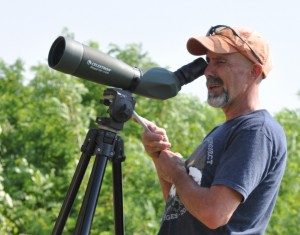
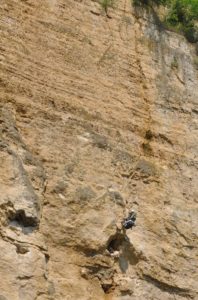

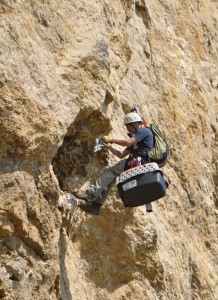
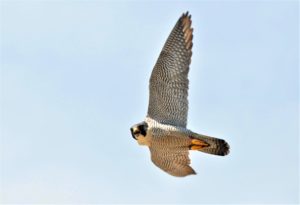
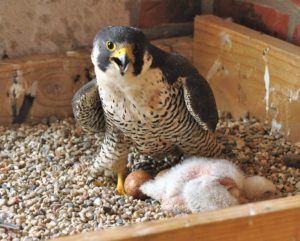
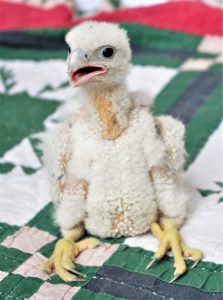
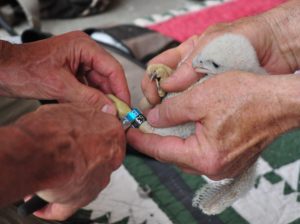
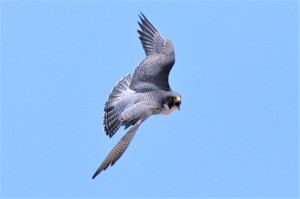

 Tom Cope
Tom Cope Sue Wilkinson
Sue Wilkinson Susan Judkins Josten
Susan Judkins Josten Rudi Roeslein
Rudi Roeslein Elyssa McFarland
Elyssa McFarland Mark Langgin
Mark Langgin Adam Janke
Adam Janke Joe Henry
Joe Henry Kristin Ashenbrenner
Kristin Ashenbrenner Joe Wilkinson
Joe Wilkinson Dr. Tammy Mildenstein
Dr. Tammy Mildenstein Sean McMahon
Sean McMahon